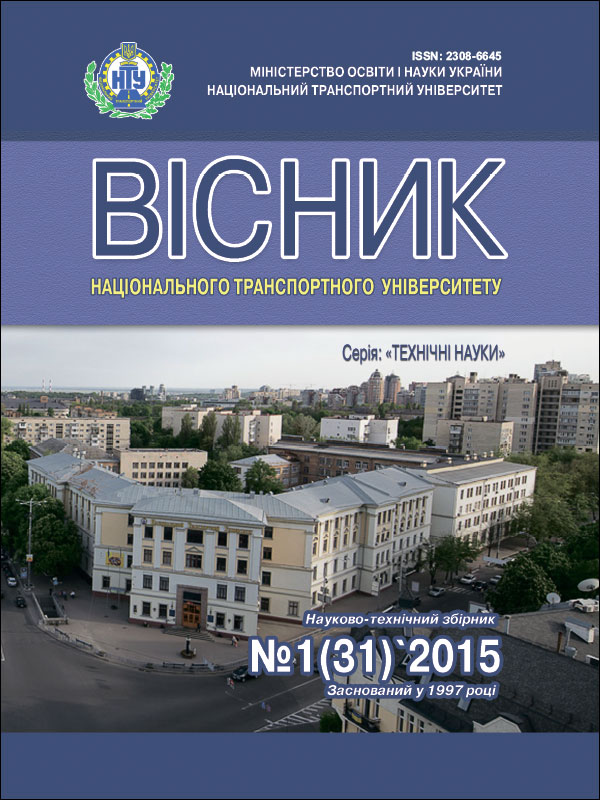NUMERICAL TESTS OF THE INFLUENCE OF THE TILT ANGLE OF THE MOTORCYCLE WINDSHIELD ON SELECTED AERODYNAMIC PARAMETERS
ABSTRACT
Jakubowski M. Numerical tests of the influence of the tilt angle of the motorcycle windshield on selected aerodynamic parameters. Visnyk of National Transport University. Series «Technical sciences». Scientific and Technical Collection. – Kyiv: National Transport University, 2021. – Issue 3 (50).
Aerodynamic drag is one of the drag forces acting on a vehicle while driving. Above a speed of about 75 km / h, this force becomes dominant, while below a rolling resistance has a greater influence. Aerodynamic drag is the sum of the resistances: body profile (about 60% of the share), vibrations of space (about 15%), friction (about 7%), inductive state (about 18%). At a speed of 100 km / h, the drag is approximately 90% of the total drag on the motorcycle.
In the context of vehicle aerodynamics research, wind tunnel measurements are still the most common and widely used, but the evolution of computers in electronic data processing and storage and advances in their computational dynamics make numerical (mathematical) modeling very useful in the research process.
Among the various design options, classic motorcycles are popular, they are not equipped with fairings and linings, with geometry, which allows you to ride comfortably with an upright fit. Such vehicles are often modified by users by installing a relatively large motorcycle windshield, which acts as a fairing and protects the rider from air pressure when driving at high speed. Mounting kits allow the angle of inclination of the windshield to be adjusted according to the driver's needs. This angle is one of the many parameters that affect the aerodynamic performance of a motorcycle, including drag. Thus, using such a windshield or a small fairing, it is possible to influence not only fuel consumption, but also the comfort and safety of driving.
The article presents the results of simulation tests of the influence of the angle of installation of the windshield of a motorcycle (20, 30 and 40 °) on the aerodynamic characteristics. The analysis covered the velocity distribution in the plane of symmetry of the vehicle, the pressure (air pressure) exerted on the rider and motorcycle, as well as the isobaric surface for the specified pressure values. Low values of aerodynamic drag were obtained for a glass tilt angle of 40 °. A motorcycle in this configuration will consume less fuel while driving, and this also has a corresponding effect on reducing exhaust gas emissions.
It should be noted that this angle of inclination of the glass, with the driver's position unchanged, exposes him to greater air pressure, especially when driving at high speed. When it comes to protecting the rider from air currents, the most advantageous configuration is a motorcycle with a 20 ° tilt angle.
KEYWORDS: AERODYNAMICS, MOTORCYCLE WINDSHIELD, FAIRING, MOTION RESISTANCE, FUEL CONSUMPTION, COMFORT AND SAFETY OF MOTORCYCLISTS.
REFERENCES
- Hucho W-H.: Aerodynamika samochodu. WKŁ, Warszawa 1988.
- Piechna J.: Podstawy aerodynamiki pojazdów. WKŁ, Warszawa, 2020.
- Zieliński A.: Konstrukcja nadwozi samochodów osobowych i pochodnych. WKŁ, Warszawa 1998.
- B. Blocken, Y. Toparlar, T. Andrianne, Aerodynamic benefit for a cyclist by a following motorcycle. J. Wind Eng. Ind. Aerodyn. 155, 1–10, 2016.
- Angeletti, M., Sclafani, L., Bella, G., & Ubertini, S.: The Role of CFD on the Aerodynamic Investigation of Motorcycles. SAE Technical Paper Series, 2003.
- Selvamuthu, T., & Thangadurai, M.: Motorcycle Drag Reduction using a Streamlined Object Ahead of the Rider. Journal of The Institution of Engineers (India): Series C, 100(5), 801–810, 2018.
AUTHOR
JAKUBOWSKI Mirosław, PhD in Technical Sciences, Rzeszow University of Technology, associate professor, Department of Automotive Vehicles and Transport Engineering,e-mail: miroslaw.jakubowski@prz.edu.pl, tel.: +48 17 865 18 05, 35-959, Rzeszow, Poland, Av. Powstancow Warszawy 12, orcid.org/0000-0001-9619-8215.
REVIEWERS
Jaworski Arthur, PhD in Technical Sciences, associate professor, Rzeszow University of Technology, associate professor of the motor vehicles and transport engineering department, Rzeszow, Poland.
Sakhno V.P., Doctor of Technical Science, professor, National Transport University, Head of the automobile department, Kyiv, Ukraine.
Article language: Polish
Open Access: http://publications.ntu.edu.ua/visnyk/50/035-045.pdf
Print date: 29.09.2021
Online publication date: 30.10.2021
